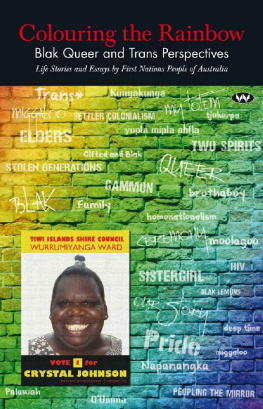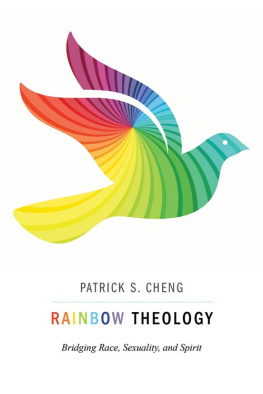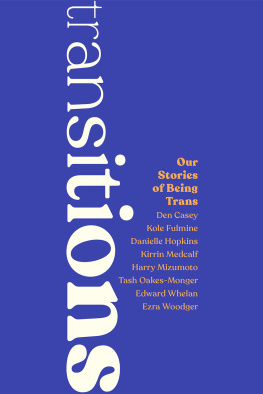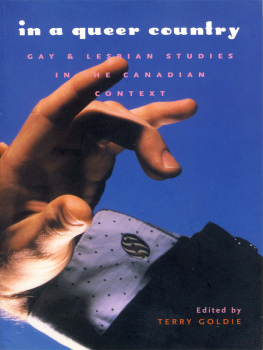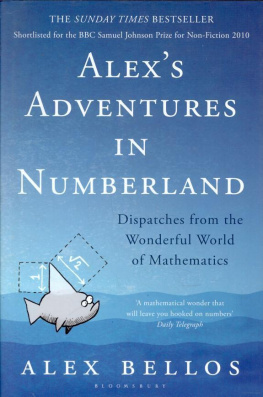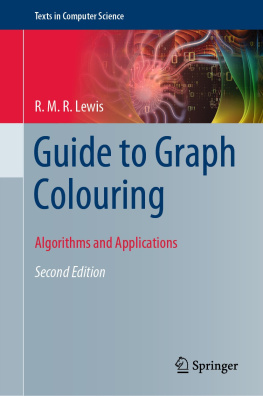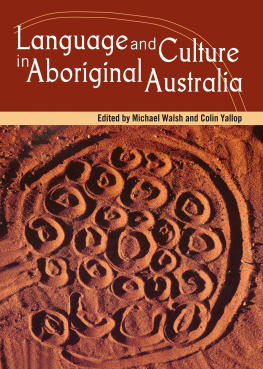
Wakefield Press

Dino Hodge is a co-author of the seminal essay Peopling the Empty Mirror: the prospects for lesbian and gay Aboriginal history (1994), and a co-editor of a social studies text on Indigenous education experiences, You Dont Get Degrees in Weetbix Boxes (1994). His other publications include Did You Meet Any Malagas? (1993), an oral history book documenting intersections of racial and sexual identities in Darwins gay community; The Fall Upward (1995), on spirituality in the lives of lesbian women and gay men; and Don Dunstan, Intimacy and Liberty (2014), a biography of South Australias great reformist premier. Dino Hodge has a PhD in history from the University of Melbourne.


Wakefield Press
16 Rose Street
Mile End
South Australia 5031
www.wakefieldpress.com.au
First published 2015
Reprinted 2015
This edition published 2015
Copyright this collection, Dino Hodge, and individual authors in respect of their own contributions, 2015
All rights reserved. This book is copyright. Apart from any fair dealing for the purposes of private study, research, criticism or review, as permitted under the Copyright Act, no part may be reproduced without written permission. Enquiries should be addressed to the publisher.
Cover designed by Liz Nicholson, designBITE
Ebook conversion by Clinton Ellicott, Wakefield Press
National Library of Australia Cataloguing-in-Publication entry
Title: Colouring the rainbow: blak queer and trans perspectives / edited by Dino Hodge.
ISBN: 978 1 74305 162 7 (ebook: mobipocket).
Notes: Includes bibliographical references.
Subjects:
Gays, BlackAustraliaAnecdotes.
GaysAustraliaAnecdotes.
Aboriginal AustraliansAnecdotes.
Aboriginal AustraliansBiography.
Other Creators / Contributors: Hodge, Dino, 1957 , editor.
Dewey Number: 305.89915

Contents
A Story to Tell: Rodney Junga Williams,
18 February 196224 November 2011
My Story, Your Story, Our Story: Recollections of
Being Aboriginal and Queer in the 1980s and 90s
Violet Buckskin, Naomi Hicks, Tempestt Sumner-Lovett,
Kym Wanganeen, Raymond Zada
Words are like Weapons, They Wound Sometimes:
Andrew Bolt, Gay White Men, and an Out and
Proud Gay Black Man
Dual Imperatives: Decolonising the Queer and
Queering the Decolonial
Stranger in a Strange Land:
Aspiration, Uniform and the Fine Edges of Identity
The Border Made of Mirrors: Indigenous Queerness,
Deep Colonisation and (De)fining Indigenousness
in Settler Law
Are We Queer? Reflections on Peopling the
Empty Mirror Twenty Years On
Acknowledgements: The Mirror
In 1994, a group of seven people (three women and four men) collaborated on the essay Peopling the Empty Mirror: The Prospects for Lesbian and Gay Aboriginal History. I was one of the two non-Indigenous members of the group, which termed itself the Gays and Lesbians Aboriginal Alliance.
Two decades on, it is time to examine the mirror itself. The life stories and essays in this book collectively address the challenges posed by the 1994 group of allies. The books contributors broadly consider indigeneity and colonialism with regard to gender and sexuality. As a whole, the book seeks dually to document a diversity of knowledges, experiences and contributions to Australian society of First Nations People from many walks of life, and to reflect upon epistemology and notions of recording and interpreting history.
My intention at the outset had been to work with community members and organisations as well as with academics in convening a national conference and then publishing the conference papers. As a preliminary step towards that goal, I convened a one-day Queer Histories Symposium under the auspices of the Australian Lesbian and Gay Archives ( ALGA ) together with the active support of the Northern Territory Archives Service ( NTAS ) and the Northern Centre for Contemporary Art ( NCCA ). The symposiums theme was Sexuality across Race, Culture and Gender. It was held in Darwin during May 2014 as an official component of the third AsiaPacific OutGames, with a diversity of speakers from Australia, the Pacific and Asia. Subsequent consultations with community members and academics saw an invitation issued for me to proceed as sole editor of this book. A call for contributions was then distributed nationally and generated considerable interest. I am grateful to everyone who responded to that call with suggestions, comments and expressions of interest.
The contributors to this book discuss their lives, outlooks, beliefs and thoughtsbut this is no ordinary knowledge. The telling of histories and the sharing of insights by First Nations People demands particular effort and courage. The reader has the chance to be taken into the confidence of the contributors, and to learn from their wisdom. We are indebted to the contributors for this opportunity.
A complexity always exists surrounding who is telling a story or documenting a topic, in what manner, and from which perspective. Some contributors have chosen to share oral histories or to write life stories. Others have prepared essays addressing specific topics or events. And some have written utilising an academic framework. My role as editor has been to gather contributions and to ensure these are presented in a format that is familiar and accessible. I have sought as much as possible to avoid influencing content, preferring to leave to contributors the decisions about topics to be documented and the information to be shared. Effort has been given to promoting clarity of expression and narrative cohesion, and the books contributors have ensured that this task has been a straight-forward and pleasurable undertaking. Furthermore, I have sequenced the chapters and book sections with the intention of placing directly complementary or contrastive contributions together, and of presenting a development of content around the themes raised in the essay Peopling the Empty Mirror. My thanks to the contributors for their trust in allowing me to adopt this role, and additionally to James Ward, Marcia Langton, Lyndon Ormond-Parker and David Aanundsen for their encouragement.
The books structure develops the notion of peopling the empty mirror. Troy-Anthony Bayliss introductory essay Looking In to the Mirror defines the context for this book and outlines some key issues. The first section, Inner Reflections, makes visible some figures in the mirror through a series of life stories as told by two sistergirls, three gay men, one lesbian and one brotherboy. The second section, An Emergent Public Face, opens with essays revealing the impact of HIV / AIDS during the late twentieth century as an impetus for a growing public profile and discourse (with no intention of downplaying the importance of the social justice and liberation movements in the preceding decades that have continued into the present day). This section includes two essays discussing elements of recent important debates instigated by inflammatory public utterances of a racist and/or homophobic nature. The final section, Looking Out of the Mirror, is comprised of essays by academics providing critical insight into various knowledge constructs and methodologies.
Next page
